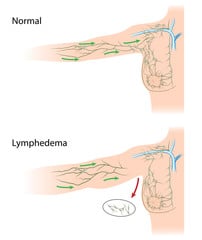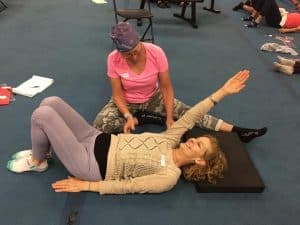How Can Exercise Help Someone Recover From a Mastectomy?
Exercise can play a crucial role in aiding the recovery process after a mastectomy (surgical removal of the breast). It’s important to note that the type and intensity of exercise should be tailored by a CETI Cancer Exercise Specialist to the individual’s specific condition, overall health, and medical advice. Always consult with a healthcare professional before starting any exercise regimen after a mastectomy. Here’s how exercise can help with recovery:
 Improved Circulation and Lymphatic Flow: Gentle exercises like walking, swimming, and light stretching can help improve blood circulation and lymphatic flow. This can reduce the risk of swelling (lymphedema) and promote healing.
Improved Circulation and Lymphatic Flow: Gentle exercises like walking, swimming, and light stretching can help improve blood circulation and lymphatic flow. This can reduce the risk of swelling (lymphedema) and promote healing.
 Restoring Range of Motion: Following surgery, some individuals may experience limited shoulder and arm movement. Specific exercises can help gradually restore range of motion and prevent stiffness. These exercises may involve pendulum swings, wall climbs, and other gentle stretches.
Restoring Range of Motion: Following surgery, some individuals may experience limited shoulder and arm movement. Specific exercises can help gradually restore range of motion and prevent stiffness. These exercises may involve pendulum swings, wall climbs, and other gentle stretches.

Pain Management: Controlled and appropriate exercise can help manage post-surgery pain. Engaging in regular low-impact activities can stimulate the release of endorphins, which are natural pain-relieving hormones.






Remember, the recovery process after a mastectomy varies for each individual. Always consult a CETI Cancer Exercise Specialist before starting any exercise program, as they can provide personalized advice based on your medical history, surgery type, and overall health. A CETI Cancer Exercise Specialist can help design a safe and effective exercise plan tailored to your needs.
